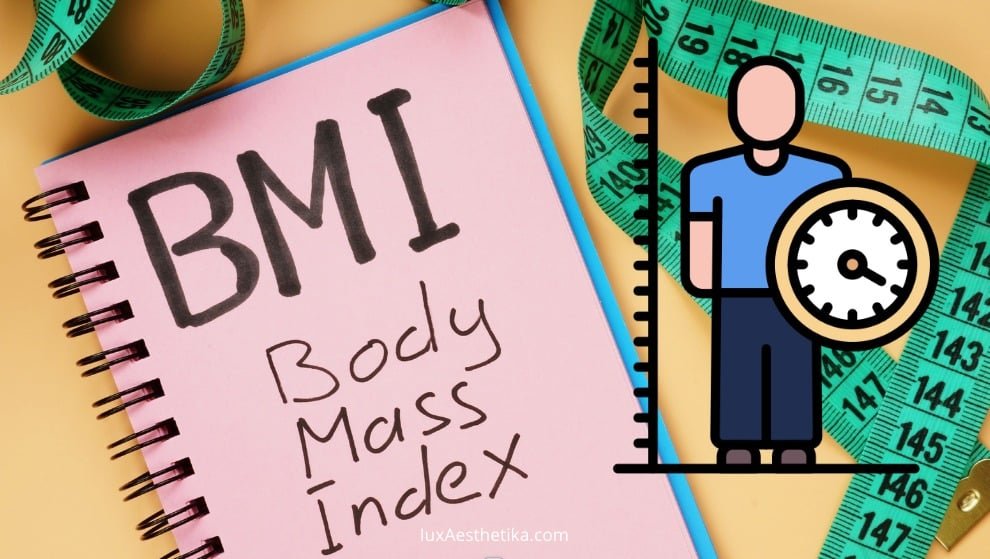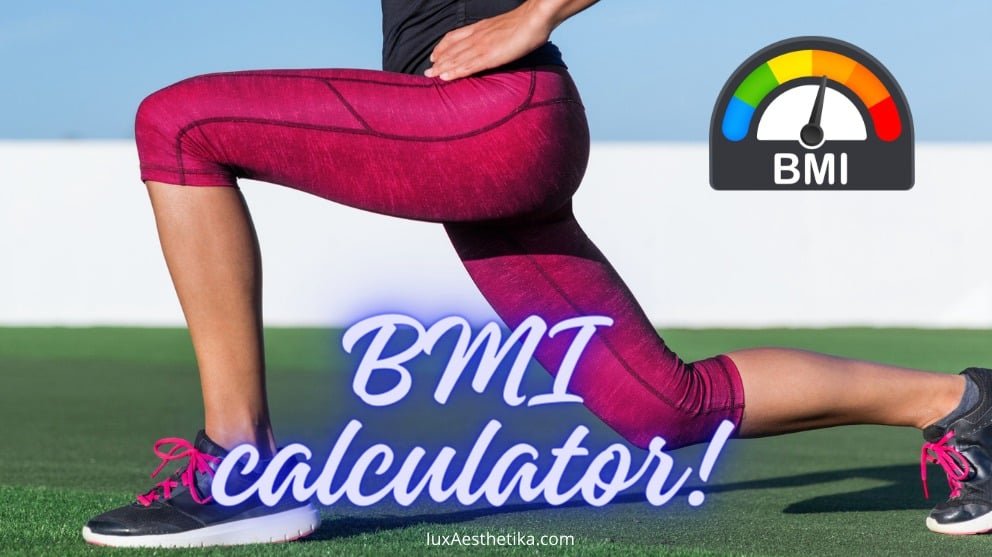
Find your BMI and calculating ideal body weight formula

How much should I weigh? You may even wonder. While there’s no one-size-fits-all answer, the concept of a healthy and adjusted body weight has been a topic of interest for many. However, a more practical approach to assessing weight is through Body Mass Index (BMI). How to reach one inch over 5 feet? This article will guide you in calculating BMI, understanding an ideal body weight formula, and exploring healthy weight management practices.
What is BMI and Why is it Important?
BMI (Body Mass Index) is a simple calculation that uses your height and weight to estimate your leanness or corpulence. It’s a widely used healthy weight calculator that provides a general idea of whether you’re in a healthy weight range for your height. Understanding My BMI is crucial as it provides insights into one’s health status and potential risks associated with weight-related conditions like diabetes, cardiovascular diseases, and hypertension.
Understanding BMI: Estimating Ideal Body Weight
What does the ideal body weight IBW mean for you? Is there any universal equation to calculate ideal body weight? Many obese patients strive to find an answer. Healthy BMI is calculated by dividing an individual’s weight in kilograms by the square of their height in meters. How to reach 1 inch over 5 feet?
How to calculate ideal body weight? This question is always important for calculating ideal body weight. We would like to provide the well-known algorithm for your consideration. The ideal body weight formula is expressed as:
BMI = weight (kg) / height^2 (m^2).
The resulting value indicates whether an individual’s weight is appropriate for their height.
Example:
If your actual body weight is 60 kg and your height is 1.7 m, then your BMI = 60 / (1.7)^2 = 20.7. This means that your adjusted body weight is within the normal range.
Important:
An ideal body weight IBW is not an accurate indicator for people with very developed muscles, pregnant women, and people over 65 years old. With calculating ideal body weight they can always plan their daily diet and life routine.
Importance of Knowing BMI
The majority of obese patients cannot understand the nature of their obesity and find a way how to fight it properly. Understanding your healthy BMI is crucial when you want to calculate IBW for several reasons, especially when considering factors like the ideal body weight calculator and determining your target weight:

By understanding the importance of knowing your body mass index and how it relates to factors like the IBW calculator and ideal weight, you can take proactive steps to improve your health and quality of life. Utilize your BMI as a valuable tool in your journey toward achieving and maintaining optimal health and wellness.
How Much Should I Weight?

How to reach an inch over 5 feet? Almost all obese patients ask this question today. Understanding the healthy bodyweight is crucial for maintaining optimal health. The ideal body weight formula to calculate IBW provides a reference point based on factors like height, age, gender, and body composition.
Explanation of the ideal body weight formula
The healthy BMI range varies based on different methods, such as the Lorenz formula, Devine formula, Robinson formula, and Miller formula. These formulas are not based on the drug dosage calculations, but take into account factors like height and gender to estimate the ideal weight range for an individual:
| Lorenz Formula | BMI = (Weight in kilograms) / (Height in meters)^2 |
| Devine Formula | BMI male calculator: Body mass index = 50 + 2.3 * (Height in inches – 60) |
| Female BMI calculator: Body mass index = 45.5 + 2.3 * (Height in inches – 60) | |
| Robinson Formula | BMI = 52 + 1.9 * (Height in inches – 60) |
| Miller Formula | BMI = 56.2 + 1.41 * (Height in inches – 60) |
These variants of the body mass index calculator provide different methods for calculating the ideal weight based on factors such as gender and height. While each formula may yield slightly different results, they all serve as tools for assessing an individual’s weight status and potential health risks associated with BMI.
Factors Affecting Ideal Body Weight

To reach one inch over 5 feet is simple. When considering ideal weight by height and age, several key factors come into play:
- Genetics – Genetic predispositions can significantly influence an individual’s body shape, metabolism, and propensity to gain or lose weight. Family history often plays a crucial role in determining one’s ideal body weight range.
- Metabolism – Metabolic rate, the speed at which the body burns calories to sustain vital functions, varies from person to person. A faster metabolism typically allows for easier adjusted body weight maintenance, while a slower metabolism may require more conscious effort to achieve and maintain a healthy weight.
- Muscle Mass – Muscle mass contributes significantly to overall weight and body composition. Individuals with higher muscle mass tend to have a higher metabolic rate and may require more calories to maintain their adjusted body weight. Conversely, lower muscle mass may result in a lower metabolic rate and potential weight gain if caloric intake is not adjusted accordingly.
- Lifestyle Choices – Dietary habits, physical activity levels, stress management, and sleep patterns all impact body weight and composition. A balanced diet rich in nutrients, a regular exercise routine, adequate sleep, and effective stress management can contribute to achieving and maintaining an ideal body weight.
- Improper Disease Control – Improper disease management can impact body weight through medication side effects, metabolic disruptions, nutrient absorption issues, fluid retention, and changes in appetite and eating habits.
Considering these factors holistically is essential when determining an individual’s ideal weight by height and average age. By understanding how genetics, metabolism, muscle mass, and lifestyle choices influence body weight, individuals can make informed decisions to optimize their health and well-being.
What does a healthy weight mean?

Adjusted body weight varies depending on body size, hence, there isn’t a universal “perfect” body weight.
The National Diabetes and Kidney Disease Institute states that various factors can affect body weight, including:
- lifestyle choices
- age and any kind of heart disease
- health conditions
- genetic makeup
- specific medications.
Additionally, measurements like waist circumference, body fat percentage, and fat distribution play roles in identifying an individual’s optimal weight range for their health. Any blood institute in the world can also agree with this theory.
Calculating BMI: How to reach an inch over 5 feet?

What is the best way to calculate IBW? Calculation of ideal body weight is a straightforward process that provides valuable insights into one’s weight status. By understanding how to calculate BMI accurately, individuals can assess their health risks and take necessary steps towards achieving an adjusted body weight.
Calculating Ideal Body Weight
BMI is calculated by dividing an individual’s weight in kilograms by the square of their height in meters. The resulting value categorizes individuals into different BMI ranges, including underweight, normal weight, overweight, and obesity.
Calculating your BMI is straightforward. Here’s the ideal body weight formula:
BMI = weight (in kilograms) / height (in meters squared)
It is the general way to calculate IBW. If you’re more comfortable using imperial units (pounds and feet), there are online calculators that can convert your units and calculate your BMI:

BMI Calculator
Here’s an example of how to calculate IBW:
Let’s say you weigh 150 pounds and are 5 feet 10 inches tall.
- First, convert your height to meters: 5 ft 10 in = 1.78 meters (conversion calculators are readily available online)
- Then, convert your weight to kilograms: 150 lbs / 2.2 = 68.0 kg
- Now, plug the values into the formula: BMI = 68.0 kg / (1.78 m)² = 21.9 kg/m²
Your BMI in this example is 21.9, which falls within the normal weight category according to the World Health Organization (WHO) classification system (covered in the next section).
Interpretation of BMI Values
Interpreting BMI values involves comparing the calculated value with standard BMI categories. Each category corresponds to a specific range of BMI values, indicating whether an individual’s weight is within a healthy range or requires attention.
Calculation of ideal body weight
Once you calculate IBW, you can interpret it using the following WHO classification system:
- Severe Thinness: Less than 16 kg/m²
- Moderate Thinness: 16 – 16.9 kg/m²
- Mild Thinness: 17 – 18.4 kg/m²
- Normal Weight: 18.5 – 24.9 kg/m²
- Overweight: 25 – 29.9 kg/m²
- Obese Class I: 30 – 34.9 kg/m²
- Obese Class II: 35 – 39.9 kg/m²
- Obese Class III: Over 40 kg/m²
It’s important to note that BMI is a general guideline and may not be perfect for everyone. Factors like muscle mass, age, ethnicity, and body composition can influence BMI interpretation.
Weight and Height Chart

A weight and height chart provides a visual representation of BMI categories based on different height and weight combinations. Understanding how to interpret the chart helps individuals to calculate IBW and assess their weight status and make informed decisions regarding their health.
Understanding the Chart
The height-weight chart categorizes individuals into ranges, such as underweight, normal weight, overweight, and obesity. By locating their height and weight on the chart, individuals can determine their BMI category and assess their weight status.
The ideal body weight formula
Table: Ideal body weight calculator by Lorenz formula:
| Height (cm/feet) | Women (kg/lbs) | Men (kg/lbs) | Height (feet) | Women (lbs) | Men (lbs) |
| 150 | 43-48 | 48-53 | 4’11” | 95-106 | 106-117 |
| 155 | 44-50 | 50-55 | 5’1″ | 97-110 | 110-121 |
| 160 | 45-51 | 51-56 | 5’3″ | 99-113 | 113-123 |
| 165 | 46-52 | 52-57 | 5’5″ | 101-115 | 115-125 |
| 170 | 47-53 | 53-58 | 5’7″ | 103-117 | 117-128 |
| 175 | 48-54 | 54-59 | 5’9″ | 105-119 | 119-130 |
| 180 | 49-55 | 55-60 | 5’11” | 107-121 | 121-132 |
| 185 | 50-56 | 56-61 | 6’1″ | 109-123 | 123-134 |
Lorenz Formula:
Ideal weight = (height – 100) – (height – 150) / 2
Example:
If your height is 170 cm, then your ideal weight is:
– For a woman: (170 – 100) – (170 – 150) / 2 = 57-63 kg
– For a man: (170 – 100) – (170 – 150) / 2 = 63-69 kg
How to use the ideal weight calculator effectively
Utilizing the weight and height chart effectively involves regularly monitoring one’s weight and comparing it with the corresponding BMI category to reach one inch over 5 feet. This allows individuals to track their progress toward achieving or maintaining a healthy weight at the same height.
Here are our useful tips:
- Provide Accurate Information: Input your height and gender accurately to ensure the calculator provides relevant results.
- Use Metric Units: Input your measurements in centimeters for height and kilograms for weight for precise calculations.
- Consider Personal Factors: Consider factors such as age, muscle mass, and activity level, as they can influence your ideal weight.
- Interpret Results Wisely: Understand that ideal weight ranges are just guidelines and may vary based on individual factors.
- Consult a Healthcare Professional: If you’re unsure about the results or need personalized advice, consult a healthcare professional.
Utilizing a healthy weight calculator effectively involves providing accurate information, considering personal factors, and interpreting the results wisely. While it’s a useful tool for estimating a healthy weight range, consulting a healthcare professional for personalized guidance is recommended for optimal health management.
What is the Ideal Body Weight Calculator?
With advancements in technology, individuals can now use online tools and calculators to determine their ideal body weight more accurately. These calculators consider various factors like height, age, gender, and activity level to provide personalized results.
Utilizing Online Tools
Ideal body weight calculators utilize sophisticated algorithms to estimate an individual’s ideal weight range based on input parameters. By entering relevant information, such as height, age, and gender, individuals can receive personalized recommendations for achieving their ideal body weight.
Table: Calculation of ideal body weight by waist
| Waist volume (cm) | Women (kg) | Men (kg) | Waist volume (inches) | Women (lbs) | Men (lbs) |
| < 80 | < 50 | < 90 | < 31.5 | < 110 | < 198 |
| 80-88 | 50-58 | 90-98 | 31.5-34.6 | 110-128 | 198-216 |
| 89-99 | 59-67 | 99-107 | 34.7-39.0 | 128-148 | 216-236 |
| 100-109 | 68-76 | 108-116 | 39.1-42.9 | 148-168 | 236-256 |
| > 110 | > 77 | > 117 | > 43.3 | > 169 | > 257 |
Note: Measure your waist circumference on an empty stomach, standing up, at the narrowest point. It should be noted that these tables are only a guide. To determine your ideal weight, it is necessary to consult a doctor or a nutritionist. They will be able to take into account all your individual characteristics and choose for you the most effective way to achieve the desired result.
Advantages and Limitations
While ideal body weight calculators offer convenience and accessibility, they may not always provide precise results. Factors like muscle mass, bone density, and body composition may not be accurately captured by these calculators. Therefore, it’s essential to use them as a general reference rather than a definitive measure of ideal body weight.
Limitations of BMI: While BMI is a helpful tool, it has limitations. Here are some things to keep in mind:
- Muscle mass: Athletes or most people with a high amount of muscle mass may have a high BMI even though they have a healthy body fat percentage.
- Age: Ideal body weight formulas can vary depending on age. BMI categories are primarily designed for adults (20 years and older).
- Body composition: BMI doesn’t differentiate between muscle and fat mass. Someone with a high percentage of body fat may fall within the normal healthy BMI range despite having a higher health risk.
Always consult with a healthcare professional for personalized guidance on adjusted body weight management.
World Methodology to Define the Ideal Body Weight

Various methods, including bioelectrical impedance analysis and IBW formulas, play a crucial role in estimating MBI accurately. In this discussion, we delve into the world-accepted methodologies and factors involved in defining an ideal body mass index, highlighting key considerations and techniques used in clinical practice:
- The bioelectrical impedance analysis (BIA) method is one of the various methods used to calculate the ideal body weight (IBW), which serves as a crucial component in determining an individual’s ideal body mass index (MBI). This technique measures the resistance of body tissues to electrical flow, providing insights into body composition, including fat and lean mass. While BIA offers a non-invasive and convenient way to estimate IBW, it’s essential to consider other factors such as frame size and existing health problems that may influence the accuracy of the results.
- Another widely recognized method for calculating IBW is the Hamwi formula, developed by Dr. G. J. Hamwi. This formula utilizes an adjusted body weight based on height, often expressed as 45.5 kg 2.3 kg for women and 50 kg 2.3 kg for men, plus an additional adjustment for every inch over 5 feet for men and 4 feet for women. While the Hamwi formula is simple and easy to use, it may not account for individual variations in body composition and may not be suitable for those with certain health conditions, such as heart disease or those requiring precise drug dosing based on weight.
- The National Institutes of Health and the National Heart, Lung, and Blood Institute have also developed IBW formulas based on population studies and health outcomes. These formulas take into account factors such as height, age, and gender to estimate a healthy weight range. However, it’s important to note that while these formulas are widely accepted, they may not apply to everyone, as individual frame size and metabolic rate can vary significantly.
- In clinical practice, healthcare providers often use a combination of methods to assess IBW and MBI accurately. This may include a comprehensive evaluation of the patient’s medical history, physical examination, and various methods of estimating body composition.
By considering all available data and individual factors, healthcare professionals can make informed decisions regarding weight management strategies and overall health promotion.
Bodyweight Workouts to Maintain Ideal Weight

In addition to monitoring ideal body weight and calculating BMI, incorporating regular exercise into your routine is crucial for maintaining an adjusted body weight. Bodyweight workouts offer a convenient and effective way to build strength, support the medium frame of your body, improve cardiovascular health, and manage weight.
Exercise in weight management
Regular exercise plays a significant role in weight management by burning calories, increasing metabolism, and promoting a loss of body fat percentage. Bodyweight workouts, which use the body’s weight as resistance, offer a practical solution for individuals looking to stay active without the need for specialized equipment.
Here’s a small list of results a person can obtain with the full bodyweight workout:
- Improved Strength: Bodyweight exercises such as push-ups, squats, and planks can help increase muscle strength and endurance.
- Enhanced Flexibility: Bodyweight movements often involve dynamic stretches that promote flexibility and mobility.
- Increased Muscle Definition: Regular bodyweight training leads to the development of lean muscle mass, resulting in a more toned appearance.
- Convenience and Accessibility: Body weight workouts require minimal equipment and can be performed anywhere, making them convenient for busy schedules or traveling.
Bodyweight workout at home or in sport club offers a range of benefits, including improved strength, flexibility, muscle definition, and convenience. Incorporating an effective bodyweight squats exercise into your fitness routine can contribute to overall health and well-being.
Body weight workout exercises
Full body bodyweight workout encompasses a wide range of movements that target different muscle groups and promote overall fitness. We will give some common exercises to lean body mass. Examples include push-ups, squats, lunges, planks, and burpees. These exercises can be modified to suit individual fitness levels and goals.
How to do body weight squats? Here is a small list of activities:
1. Push-Ups
Targets the chest, frame size, shoulders, and triceps. Start in a plank position with hands shoulder-width apart, lower your body until your chest nearly touches the floor, then push back up.
2. Bodyweight Squats
Works the quadriceps, hamstrings, and glutes. Stand with feet hip-width apart, lower your body fat percentage as if sitting back into a chair, then push through your heels to return to standing.
3. Lunges

Engages the quadriceps, hamstrings, glutes, and calves. Step forward with one leg and lower your body until both knees are bent at a 90-degree angle, then return to the starting position and repeat on the other side.
4. Plank
Strengthens the core, shoulders, and back. Hold a push-up position with your body in a straight line from head to heels, engaging your core muscles and avoiding sagging or arching.
5. Burpees
Provides a full-body workout, including cardiovascular benefits. Start in a standing position, squat down and place your hands on the floor, kick your feet back into a plank position, perform a push-up, jump your feet back to your hands, and explosively jump up.
6. Mountain Climbers
Works the core, shoulders, and legs while providing a cardiovascular challenge. Start in a plank position and quickly alternate bringing one knee towards your chest and then switching legs.
7. Tricep Dips
Targets the triceps. Sit on the edge of a sturdy chair or bench with hands gripping the edge, slide your butt off the front of the chair, bend your elbows to lower your body, then press back up to the starting position.
8. Supermans
Engages the lower back and glutes. Lie face down on the floor with arms extended overhead, lift your arms, chest, and legs off the ground simultaneously, hold for a moment, then lower back down.
These exercises can be performed as a circuit or individually, depending on your fitness level and preferences. Remember to warm up before exercising and cool down afterwards, and always listen to your body to prevent injury.
FAQs
Here are some frequently asked questions about ideal body weight and BMI:
1. Is there a single ideal body weight formula?
There isn’t a universally accepted ideal body weight formula. BMI provides a starting point, but factors like body composition and age influence healthy weight ranges.
2. What are some healthy weight management practices?
Maintaining a healthy weight and reaching an ideal body weight IBW involves a balanced approach. Here are some tips:
- Eat a balanced diet rich in fruits, vegetables, and whole grains.
- Limit processed foods, sugary drinks, and unhealthy fats.
- Engage in regular physical activity, including bodyweight workouts.
3. Where can I find a weight and height chart?
While weight and height charts can be informative, they may not consider individual factors. BMI calculators provide a more personalized assessment.
4. Are there separate BMI calculators for men and women?
No, the same ideal weight calculator applies to obese patients – both men and women. The calculation itself uses only weight and height, which are relevant for both genders. However, it’s important to remember that after calculating BMI, the interpretation of the results might differ slightly for men and women in some resources, particularly for children and teenagers. This is because body fat distribution can vary between genders during these developmental stages.



